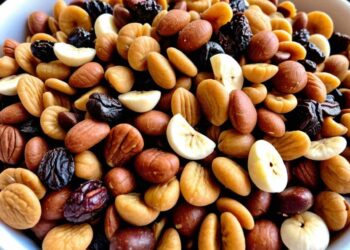When it comes to making candy, choosing the right preservation method can significantly impact the final product’s texture, flavor, and shelf life. Two popular methods—freeze drying and dehydration—offer different results, making them suitable for different types of candy. In this article, we will explore the key differences between freeze dryers and dehydrators, how they work, and which is best for candy-making.
Understanding Freeze Drying and Dehydration:
What is Freeze Drying?
Freeze drying, also known as lyophilization, is a process that removes moisture from food by freezing it and then applying a vacuum to sublimate the ice directly into vapor. This process preserves the food’s structure, flavor, and nutritional value while making it extremely light and crisp. The low temperatures used in freeze drying prevent the formation of ice crystals that can damage the texture of food, making it an excellent method for creating unique candy textures.
What is Dehydration?
Dehydration is a process that removes moisture from food by applying heat and air circulation over an extended period. The warm air evaporates water content, leaving the food dry and shelf-stable. This method has been used for centuries to preserve fruits, meats, and other food items. The heat used in dehydration can slightly alter the food’s flavor and texture, often resulting in a chewier consistency.
Texture and Appearance: Freeze-Dried Candy vs. Dehydrated Candy!
One of the most noticeable differences between freeze-dried and dehydrated candy is texture.
- Freeze-dried candy has a light, airy, and crispy texture. Because the moisture is removed in a way that maintains the original structure, freeze-dried candy becomes crunchy and often dissolves in the mouth quickly.
- Dehydrated candy has a denser, chewier consistency. Since dehydration shrinks the candy and condenses its sugars, the final product is more compact and retains some of its stickiness.
For example, freeze-dried Skittles puff up and become crunchy, whereas dehydrated fruit leathers or chewy gummy candies remain flexible and chewy.
Flavor Differences:
Moisture affects how we perceive taste. The intense crunch of freeze-dried candy allows flavors to be released quickly, giving a more concentrated and explosive taste. Dehydrated candy, on the other hand, retains some of its moisture and releases flavors more gradually, making it taste richer but less intense.
Shelf Life Comparison:
Shelf life is another important consideration when choosing between freeze drying and dehydration.
- Freeze-dried candy can last for years when stored properly in airtight containers with oxygen absorbers. The lack of moisture significantly slows bacterial growth and spoilage.
- Dehydrated candy typically lasts for months, as it still retains some moisture, making it more susceptible to mold and spoilage if not stored correctly.
Can Dehydration Cause a Urinary Tract Infection (UTI)?
Which Method is Better for Making Candy?
Best Uses for Freeze Drying:
- Crunchy and airy candy (e.g., Skittles, marshmallows, gummy bears, ice cream bites)
- Creating a light, melt-in-your-mouth texture
- Long-term storage and emergency preparedness
- Preserving the original shape and structure of the candy
Best Uses for Dehydration:
- Chewy, dense candies (e.g., fruit leather, chewy taffy, caramel-based candies)
- Simple, cost-effective preservation without expensive equipment
- Enhancing flavors over time through slow moisture loss
- Traditional drying techniques with minimal processing
Cost and Equipment Considerations:
One of the biggest differences between freeze dryers and dehydrators is cost and complexity.
- Freeze dryers are expensive, often costing between $2,000 and $5,000 for home models. They also require more time to process food, as freeze drying can take 24–48 hours per batch.
- Dehydrators are much more affordable, typically ranging from $50 to $500, depending on size and features. They are also faster, with drying times ranging from a few hours to a day.
Conclusion:
The best choice between a freeze dryer and a dehydrator for candy-making depends on your goals. If you want light, crispy, and long-lasting candy with an intense flavor burst, a freeze dryer is the best option. However, if you prefer a chewy texture and a more budget-friendly approach, a dehydrator is a great alternative.
In the end, both methods offer unique advantages, and the right choice comes down to personal preference, cost, and desired candy texture.










Discussion about this post